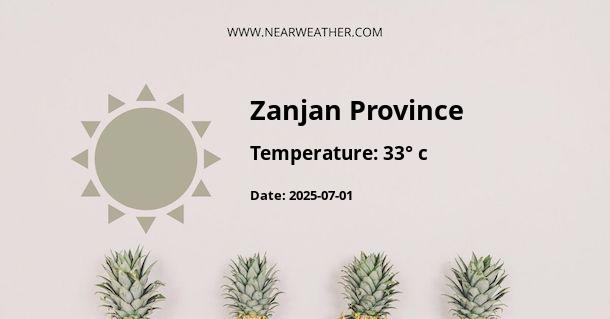Introduction
Ostān-e Zanjān is a picturesque province located in the northwestern region of Iran. It is a region known for its diverse weather patterns and fascinating climate. This content will provide an in-depth analysis of the climate, weather conditions, and their impact on the local ecology and socio-economic aspects of Ostān-e Zanjān.
Geographical Features
Ostān-e Zanjān is characterized by a combination of mountainous terrains, plateaus, and valleys, which significantly impact the weather patterns in the region. The province is located at a mean altitude of about 1,300 meters above sea level, which also contributes to its unique climate.
Climate Overview
The climate of Ostān-e Zanjān can be classified as a cold semi-arid climate. This classification is based on the Köppen-Geiger climate classification system, which is a widely accepted method for climate classification.
"The average annual temperature in Ostān-e Zanjān is 11.7°C, and the region receives approximately 304 mm of precipitation annually."
Seasonal Weather Patterns
Spring
Spring in Ostān-e Zanjān usually begins in late March and lasts until June. The weather during this season is generally mild, with an average temperature ranging between 10°C and 20°C. The region also receives a significant amount of its total rainfall during this period.
Summer
Summers in Ostān-e Zanjān, typically from June to September, are characterized by warm weather. The average temperature during these months can range between 20°C and 30°C. The region receives the least rainfall during this period, making it the driest season.
Autumn
The autumn season, from September to November, brings a cooler climate with average temperatures falling between 10°C and 20°C. Rainfall during this season is moderate.
Winter
Winters in Ostān-e Zanjān, from December to March, are typically cold with average temperatures falling below 10°C. Snowfall is common during these months, contributing to the overall precipitation in the region.
Impact of Climate on Local Ecology
The varying climate and weather conditions throughout the year in Ostān-e Zanjān have a profound impact on the local ecology. The natural vegetation in the region is primarily composed of temperate grassland, shrubland and deciduous forests. The region's fauna is also quite diverse, with species adapted to the cold semi-arid conditions.
Socio-Economic Implications
The climate of Ostān-e Zanjān has significant socio-economic implications. The region's agricultural practices are largely influenced by the weather conditions. The majority of the crops are grown during the spring and autumn seasons when the weather conditions are most suitable. Additionally, the cold winters provide an ideal environment for traditional practices such as carpet weaving. The region is also a popular destination for tourists, particularly during the spring and autumn seasons when the weather is pleasant.
Conclusion
In conclusion, the climate and weather conditions of Ostān-e Zanjān are characterized by a unique blend of cold semi-arid conditions, influenced by its geographical features. The region's diverse weather patterns significantly impact its local ecology and socio-economic practices, making it a unique and interesting place to explore.
A - Zanjan Province's Latitude is 36.500000 & Longitude is 48.333328.
A - Weather in Zanjan Province is -1° today.
A - Climate Conditions in Zanjan Province shows clear sky today.
A - Humidity in Zanjan Province is 53% today.
A - Wind speed in Zanjan Province is 7.99 km/h, flowing at 183° wind direction. today.
